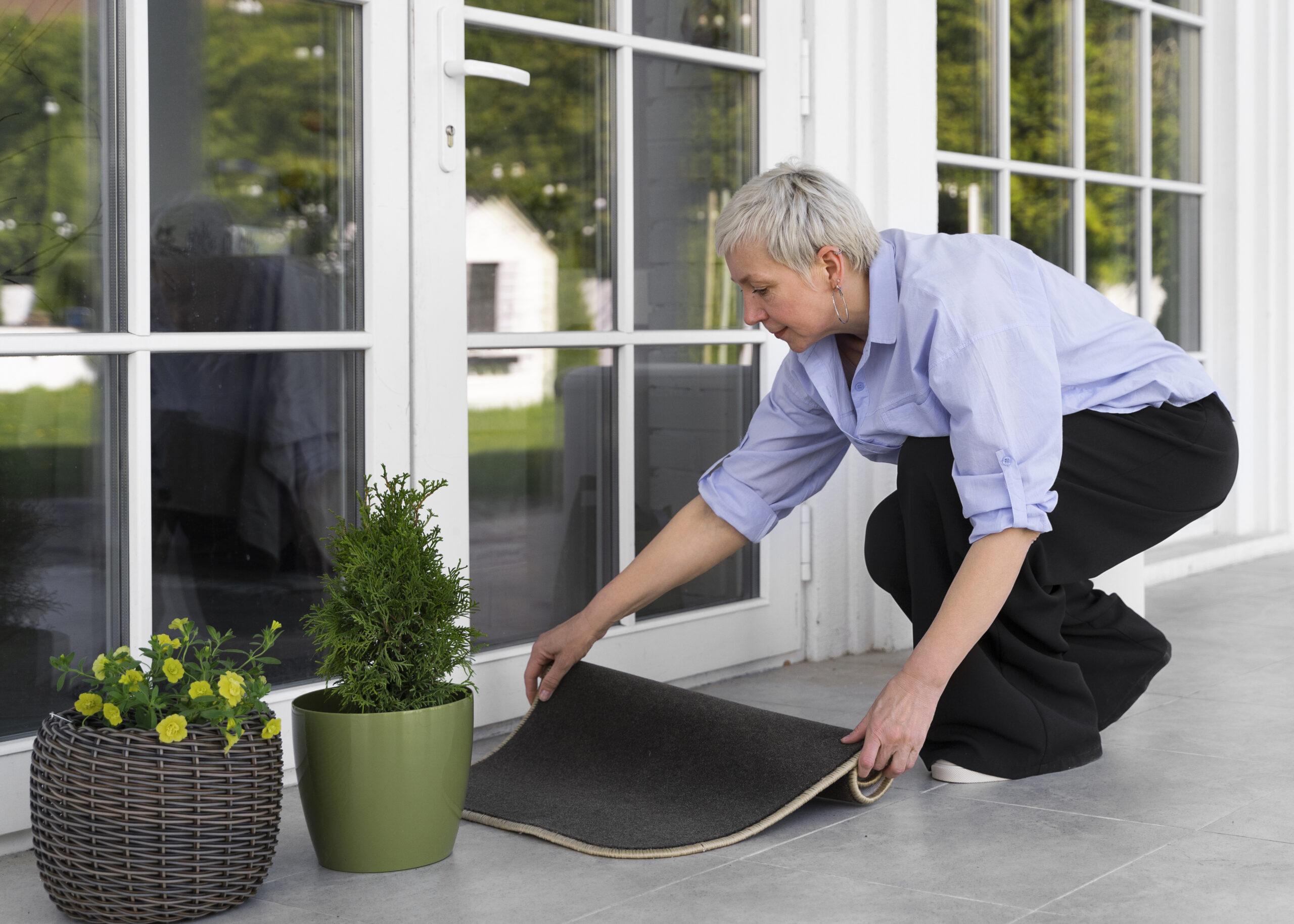Falls Prevention Hints and Tips
As we age, our risk of falling increases due to various factors such as changes in balance, vision impairment, and other health issues. However, the good news is that many falls can be prevented, and there are several steps we can take to reduce our risk. In this post, we’ll explore some simple yet effective tips and advice to help you stay safe and prevent falls.
Trip Hazards
One of the first areas to address in falls prevention is eliminating trip hazards around the home. Here are some steps you can take:
- Secure Rugs and Mats: Take up loose rugs and mats or secure them with slip-resistant backing to prevent slipping accidents.
- Reduce Clutter: Keep your living space tidy and organized to minimize the risk of tripping over objects.
- Secure Cables and Wires: Ensure that cables and wires from electronics are safely secured to avoid tripping hazards.
- Adequate Lighting: Make sure that hallways, stairways, and outdoor walkways are well-lit to improve visibility and reduce the risk of falls, especially in low-light conditions.
- Trim Bushes and Shrubs: Keep outdoor paths clear by trimming bushes and shrubs to prevent obstacles in your path.
If you need further advice on making your home safer, don’t hesitate to ask your GP to refer you to an Occupational Therapist.
Bathroom Safety
The bathroom can be a particularly hazardous area due to wet surfaces. Here’s how you can enhance safety:
- Install Grab Rails: Place grab rails in the shower, bath, or near the toilet to provide extra support when needed.
- Non-Slip Mats: Use non-slip mats in the shower, bath, and on bathroom floors to prevent slipping accidents.
Around Your Home
There are several additional measures you can take to make your home safer:
- Place Items at Waist Level: Store everyday items at waist level to avoid reaching or bending over excessively.
- Night Lights: Install night lights in hallways and landings to improve visibility during nighttime trips to the bathroom.
- Handrails: Install handrails in areas where you need extra support, such as staircases and hallways.
- Repair Flooring: Repair loose carpet and uneven flooring to prevent tripping hazards.
Stairs
Stairs pose a significant risk for falls. Consider the following precautions:
- Second Bannister Rail: Install a second bannister rail on stairs for added stability and support.
Health
Maintaining good health is essential for falls prevention:
- Medication Review: Regularly review your medications with your doctor to ensure they don’t contribute to dizziness or balance issues.
- Bone Health: Discuss your bone health with your GP, especially if you’re at risk of osteoporosis or fractures.
- Regular Checkups: Have your eyesight and hearing checked regularly, as impaired senses can increase the risk of falls.
- Stay Active: Keep up with regular exercise to maintain strength and balance.
Useful Everyday Tips
Here are some additional everyday tips to help prevent falls:
- Watch Your Step: Be cautious of uneven ground, especially when outdoors.
- Use Walking Aids: If recommended by your healthcare provider, make sure to use any prescribed walking aids.
- Proper Footwear: Wear flat shoes with rubber soles for better traction and stability.
- Wearable Alarms: If you have a wearable alarm, wear it at all times to quickly call for help in case of a fall.
- Well-Fitting Clothes: Avoid wearing clothing that may trip you up, such as trailing trousers or belts.
- Emergency Contacts: Keep a list of emergency contact numbers near your phone for quick access.
- Take Your Time: Avoid rushing and take your time when moving around to reduce the risk of slips and falls.
By implementing these simple tips and making your environment safer, you can significantly reduce your risk of falls and maintain your independence as you age.


